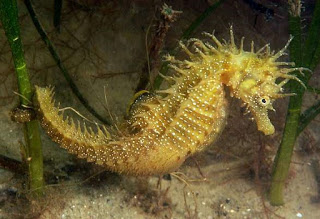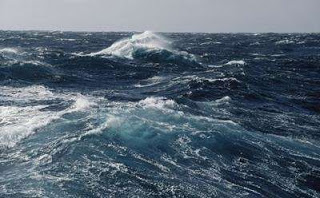Hurricane Michael and Climate Change, United Nations’ Intergovernmental Panel for Climate Change: “We have Twelve Years to Act”, Top Brands Contributing to Plastic Pollution, Dwindling Seahorse Populations, Silky Sharks Poached in the Philippines And More…
 Scientists are increasingly confident of the link between climate change and hurricanes. In a warming world, they say, hurricanes will be stronger, for a simple reason: Warmer water provides more energy that feeds them. Hurricanes and other extreme storms will also be wetter, for a simple reason: Warmer air holds more moisture. And, storm surges from hurricanes will be worse, for a simple reason that has nothing to do with the storms themselves: Sea levels are rising.
Scientists are increasingly confident of the link between climate change and hurricanes. In a warming world, they say, hurricanes will be stronger, for a simple reason: Warmer water provides more energy that feeds them. Hurricanes and other extreme storms will also be wetter, for a simple reason: Warmer air holds more moisture. And, storm surges from hurricanes will be worse, for a simple reason that has nothing to do with the storms themselves: Sea levels are rising.
Andreas Kluth, from Handelsblatt Global, states “Hurricane Michael is also part of the biggest global story of our time: climate change. The local is global and the global is local. So says the new report by the Intergovernmental Panel on Climate Change, part of the United Nations. If you find yourself, say, in the northern German city of Cuxhaven, the report means that your town will in one lifetime be underwater. The 91 scientists of the IPCC once again reminded us that climate change is the biggest threat we face as a species.”
The world’s leading climate scientists have warned that we only have a dozen years for global warming to be kept to a maximum of 1.5 C, beyond which even half a degree will significantly worsen the risks of drought, floods, extreme heat and poverty for hundreds of millions of people. The authors of the landmark report by the UN Intergovernmental Panel on Climate Change (IPCC) released on Monday say urgent and unprecedented changes are needed to reach the target, which they say is affordable and feasible although it lies at the most ambitious end of the Paris agreement pledge to keep temperatures between 1.5 C and 2 C.
3. One Day After Catastrophic United Nations Climate Report, Trump Removes Restrictions on Ethanol Gasoline
President Trump announced during a political rally in Iowa Tuesday that his administration will allow year-round sales of gasoline with higher blends of ethanol, a perk for farmers worried about Trump’s trade wars and a setback for those concerned about the effects of ethanol on the environment. The move would come one day after an alarming report from the United Nations that said a rise in global temperatures above 1.5 degrees Celsius—which could come as early as 2030—could cause catastrophic damage unless “rapid and unprecedented” changes in energy use is made before then.
Avoiding global climate chaos will require a major transformation of society and the world economy that is “unprecedented in scale,” the UN said Monday in a landmark report that warns time is running out to avert disaster. Earth’s surface has warmed one degree Celsius (1.8 degrees Fahrenheit)—enough to lift oceans and unleash a crescendo of deadly storms, floods and droughts—and is on track toward an unliveable 3C or 4C rise. At current levels of greenhouse gas emissions, we could pass the 1.5 C marker as early as 2030, and no later than mid-century, the Intergovernmental Panel for Climate Change (IPCC) reported with “high confidence”.
5. Coca Cola, Pepsi, Nestle Top Ocean Polluters: Report On Plastic Pollution
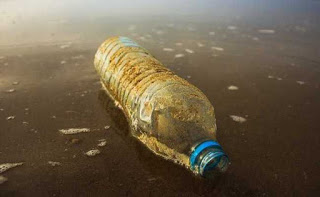
Coca-Cola, Pepsi, and Nestle are among the companies that contribute most to ocean pollution with single-use plastics, according to a study presented on Tuesday by the “Break Free from Plastic” initiative. The environmental movement, launched in 2016, has helped clear the coasts of 42 countries around the world of discarded plastics. “These brand audits offer undeniable proof of the role that corporations play in perpetuating the global plastic pollution crisis,” said Von Hernandez, the Global Coordinator of Break Free From Plastic, at the presentation of the study in Manila.
6. British Seahorses Dying Out at Due to Boats Damaging Breeding Habitat
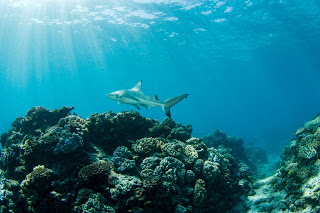 The United Nations issued a dire alert on Monday, warning that many of the world’s coral reefs could die as soon as 2040 as a result of climate change. Already, warming waters have bleached more than two-thirds of the coral in the Great Barrier Reef, the world’s largest coral reef ecosystem, which covers more than 130,000 square miles and is visible from space. But the Great Barrier Reef, despite its status, is not the only unique or threatened marine ecosystem in Australia.
The United Nations issued a dire alert on Monday, warning that many of the world’s coral reefs could die as soon as 2040 as a result of climate change. Already, warming waters have bleached more than two-thirds of the coral in the Great Barrier Reef, the world’s largest coral reef ecosystem, which covers more than 130,000 square miles and is visible from space. But the Great Barrier Reef, despite its status, is not the only unique or threatened marine ecosystem in Australia.
 Extraordinary photographs that revealed a baby humpback whale caught in a shark net on the Gold Coast could not have been taken under new laws proposed by the Queensland government, two environmental groups have said. State Labor government proposal to create new exclusion zones of 20 metres around shark control equipment effectively created a “shark gag law”, because it would make photography of drumlines and shark nets almost impossible.
Extraordinary photographs that revealed a baby humpback whale caught in a shark net on the Gold Coast could not have been taken under new laws proposed by the Queensland government, two environmental groups have said. State Labor government proposal to create new exclusion zones of 20 metres around shark control equipment effectively created a “shark gag law”, because it would make photography of drumlines and shark nets almost impossible.Maritime police in Palawan arrested three poachers of endangered marine species. Greg Togonon, of Unit-Maritime Group, reported that three local fishermen were detained after being caught with endangered silky sharks (Carcharhinus falciformis). Togonon said the silky shark is identified by the International Union for Conservation of Nature as a “near threatened” species worldwide and is listed on CITES’ Appendix II.
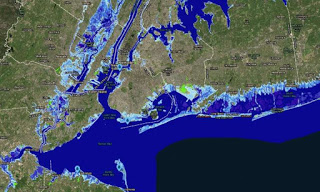
Global average sea-level could rise by nearly 8 feet (2.5 meters) by 2100 and 50 feet (15 meters) by 2300 if greenhouse gas emissions remain high and humanity proves unlucky, according to a review of sea-level change and projections by Rutgers and other scientists. Since the start of the century, global average sea-level has risen by about 0.2 feet (0.06 m). Under moderate emissions, central estimates of global average sea-level from different analyses range from 1.4 to 2.8 more feet (0.43 – 0.85 m) by 2100, 2.8 to 5.4 more feet (0.85 – 1.65 m) by 2150 and 6 to 14 feet (1.8 – 4.3 m) by 2300, according to the study, published in Annual Review of Environment and Resources.
Read more…
and
Read the study here…
Research by scientists at the University of Southampton has revealed the extent by which achieving the ambitions the 2015 Paris Climate Change agreement could protect coastal communities from rising sea levels. A new special report on the impacts of global warming of 1.5 °C above pre-industrial levels is being published today by the Intergovernmental Panel on Climate Change (IPCC), and heavily draws on five pieces of research by the University of Southampton team. The University’s studies indicated that measures to limit global warming to 1.5°C could halve the amount by which sea levels rise by the end of the century, reducing it to 40cm as opposed to 78cm if no action to mitigate for climate change is taken. If global warming is kept to 2.0°C, sea-levels are projected to rise by 46cm.
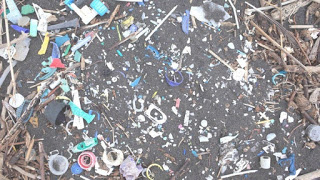 Humanity’s penchant for single-use plastics is beginning to manifest in some truly ugly ways. As we start to really get a grasp on the magnitude of the Great Pacific Garbage Patch, elsewhere in the ocean plastic waste is mounting on the shores of some of the most remote islands, with a new study revealing the true extent of the mess and the threat it poses to local species.
Humanity’s penchant for single-use plastics is beginning to manifest in some truly ugly ways. As we start to really get a grasp on the magnitude of the Great Pacific Garbage Patch, elsewhere in the ocean plastic waste is mounting on the shores of some of the most remote islands, with a new study revealing the true extent of the mess and the threat it poses to local species.
 Hidden below the waves off the east coast of Australia, scientists have discovered a ‘lost world’ of epic volcanic peaks buried under the Tasman Sea, never before seen with human eyes. This range of volcanic seamounts – underwater mountains formed by ancient, extinct volcanoes – towers some 3 kilometers (1.9 miles) above the ocean floor. Despite the immense height, it has never been previously detected, since even the highest peaks are concealed 2 km (1.2 miles) below the surface of the South Pacific.
Hidden below the waves off the east coast of Australia, scientists have discovered a ‘lost world’ of epic volcanic peaks buried under the Tasman Sea, never before seen with human eyes. This range of volcanic seamounts – underwater mountains formed by ancient, extinct volcanoes – towers some 3 kilometers (1.9 miles) above the ocean floor. Despite the immense height, it has never been previously detected, since even the highest peaks are concealed 2 km (1.2 miles) below the surface of the South Pacific.




